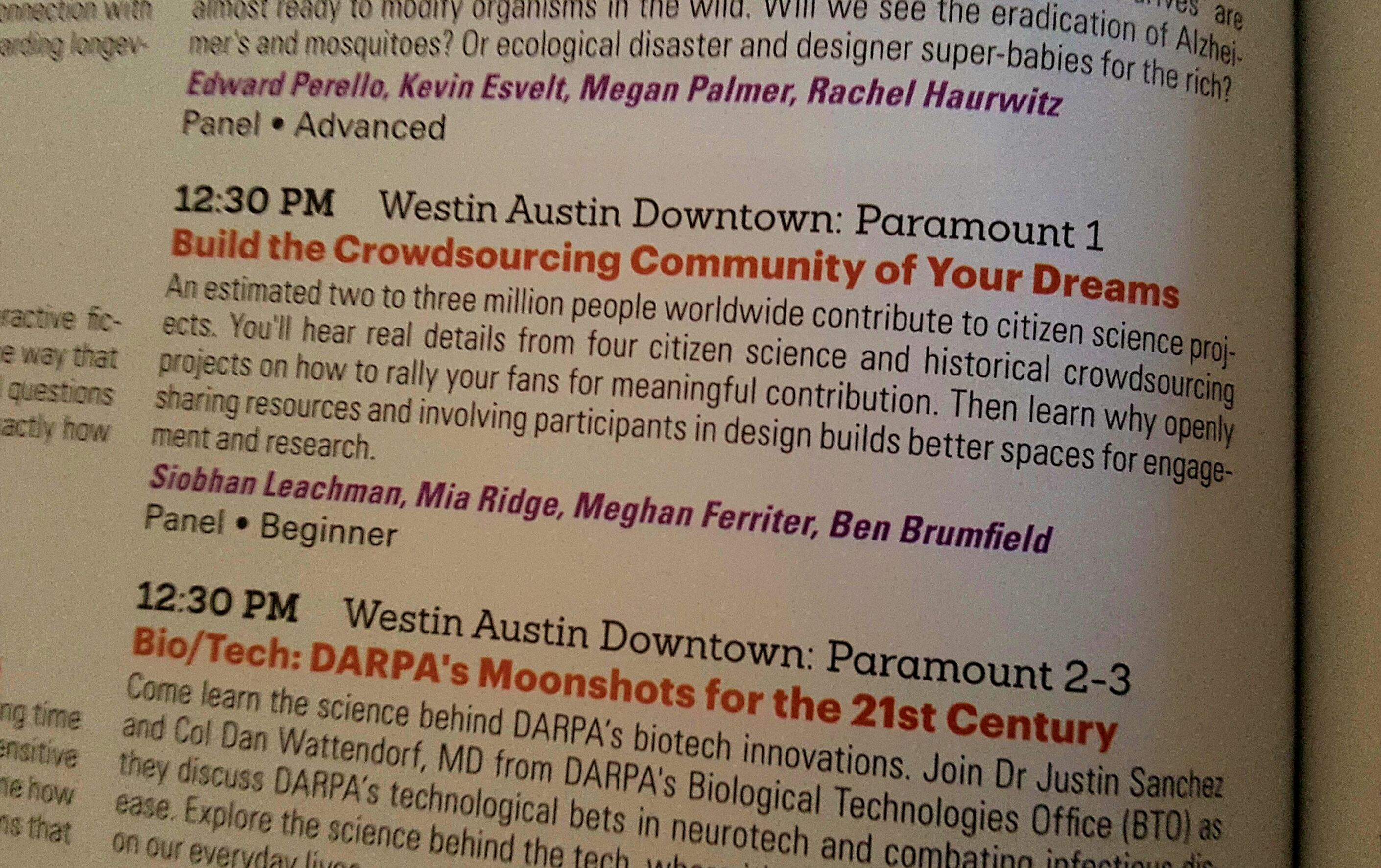Tag: Panel
Dreamy Digital Engagement at SXSW Interactive

At SXSW Interactive, I was on the trail of engagement, interaction, communication, and online collaboration – from opening sessions to my crowdsourcing panel on 12 March and beyond.
In November 2015, I was frankly pumped to have my panel on building engaged communities through crowdsourced transcription accepted for SXSW Interactive. The panel we submitted included three forward-thinking, complimentary mindsets with unique views into the challenges and complexities of crowdsourcing: digital curator Dr. Mia Ridge and independent software developer Ben Brumfield and long-time Citizen Scientist and self-identified #volunpeer Siobhan Leachman.
 When March 2016 arrived, I was well past thrilled – but also focused on making our panel useful and engaging, even as we discussed approaches for engagement. We arranged our session as a brief introductory round robin, a series of discussion prompts, and open discussion – finalized over pretty delicious brats and brews at Easy Tiger. Mmm, “brain food.” We also gathered useful resources for getting up to speed on our discussion and shared them along with our panel slides.
When March 2016 arrived, I was well past thrilled – but also focused on making our panel useful and engaging, even as we discussed approaches for engagement. We arranged our session as a brief introductory round robin, a series of discussion prompts, and open discussion – finalized over pretty delicious brats and brews at Easy Tiger. Mmm, “brain food.” We also gathered useful resources for getting up to speed on our discussion and shared them along with our panel slides.
On Saturday, March 12, during our standing-room only session, we had observations and direct questions with a practical bent. Specifically we heard questions about tried-and-true tactics for recruiting and retaining participants (lifecycle of participants). We were able to reflect on our approaches, as well as what we might do as best practice. We were also asked about the ways crowdsourcing can be integrated as more of a “win” such as being acknowledged as a credited volunteer contribution. We also were asked what we viewed on the horizon for crowdsourcing. Mia is concerned with machine learning and leveling up human computation, Siobhan is most interested in the connections between the data, while Ben is focused on the mobile writing on the wall. I’m interested in all of those things, but also maintaining supportive spaces + using the data + new tasks such as audio transcription and image-based decision trees (for the TC). Finally we also had queries about the potential to integrate crowdsourcing into the classroom. We offered smaller examples of integration in secondary and primary schools, as well as with regard to life-long learning. Siobhan rounded up the commentary in this storify.
As I wrote elsewhere in our bid for selection: “The most important element of our panel is passion – it will become clear to you if when we’re selected that we aren’t merely advocates for the power of many hands making light work. Rather we want to make those tools, projects, and experiences the very best they can be. We also support openly sharing best practice and the product whenever possible.” It was a pleasure to convene with Siobhan, Ben, and Mia. Check in with Mia’s round up of our panel at SXSW.
Are you thinking about what’s next for crowdsourcing? Join us in Krakow at DH2016 on 12 June to sight the terrain that lies ahead for crowdsourcing. You can apply and learn more about our goals for a collaborative session here.
Watch this space for my round up of the rest of the sessions I attended at SXSW: including but not limited to”posts that disappear,” seeding entrepreneurial cities, misguided understandings of participation barriers.
Featured Image via Mike Killi’s tweet – thanks for spending the session with us, Mike!
Between the Sporting Lines

Happy New Year and third week in January! There’s already so much happening this year that I’ve not had a chance to share these slides from a talk I gave in December for a Foreign Services Institute panel on Sport in Western Europe.
Our panel was oriented around the challenges and experiences foreign service professionals might face as they enter their next assignments. I spoke with the group to recommend a set of questions that could be used to analyze the social and political circumstances of their environments – rather than an overview of any one aspect of sport or region in Western Europe.
I described my presentation as “talking a bit about the ways sport can be a lens to better understand the communities in which the students will be situated; that includes thinking about the origins and functions of sporting clubs (as it contrasts with U.S. sport models) — and how a keeping an ear to media coverage of sport can tell more about the readership than the sport/event itself. I suppose I’d call my remarks a series of critical questions the students can take forward and more rapidly relate to the context of their assignments.”
While I can’t be sure whether the group felt immediate resonance with my presentation, much like teaching a research methods or theory course, I do hope these questions will be triggered in interactions in the future – leading to better integration and understanding of host cultures.
What kinds of questions would you include in unpacking the meaning, impact, and role of sport if you found yourself in a new city or country? Please share your thoughts or relevant resources in the comments.
